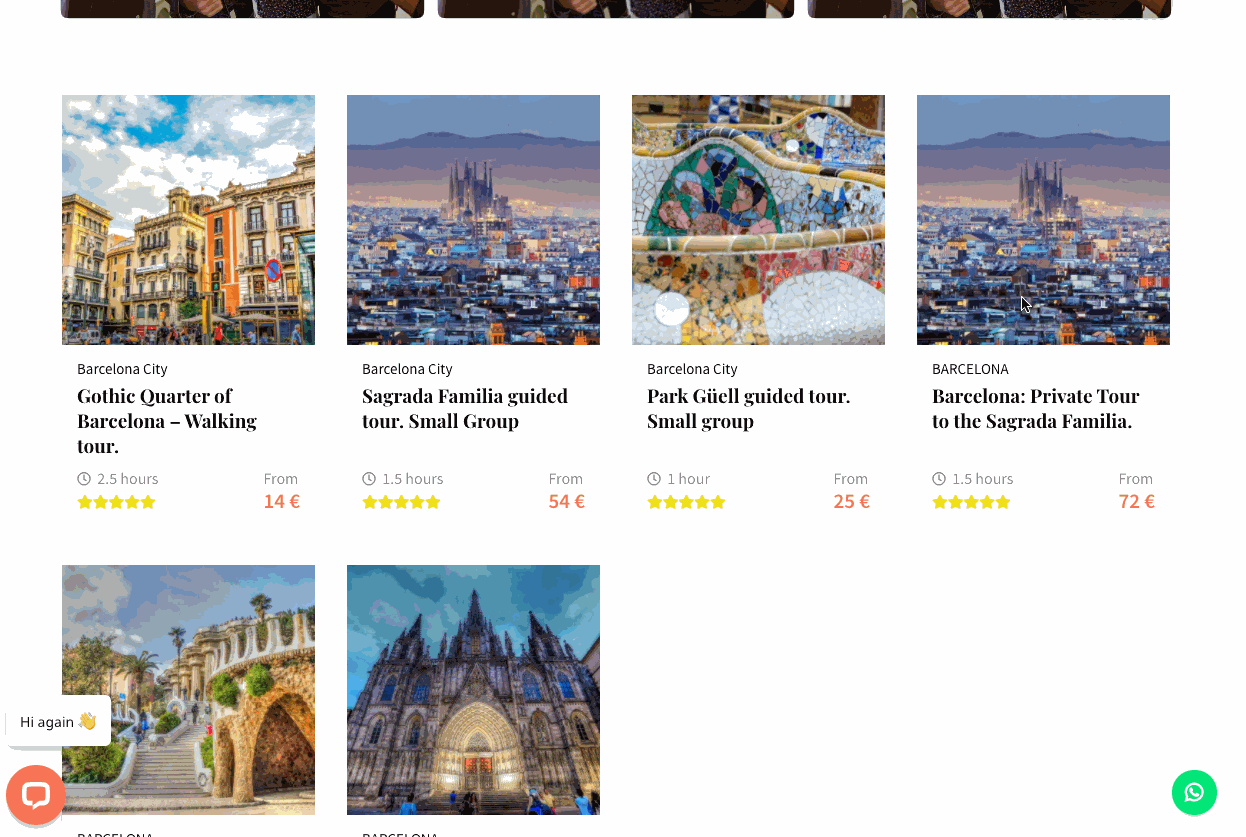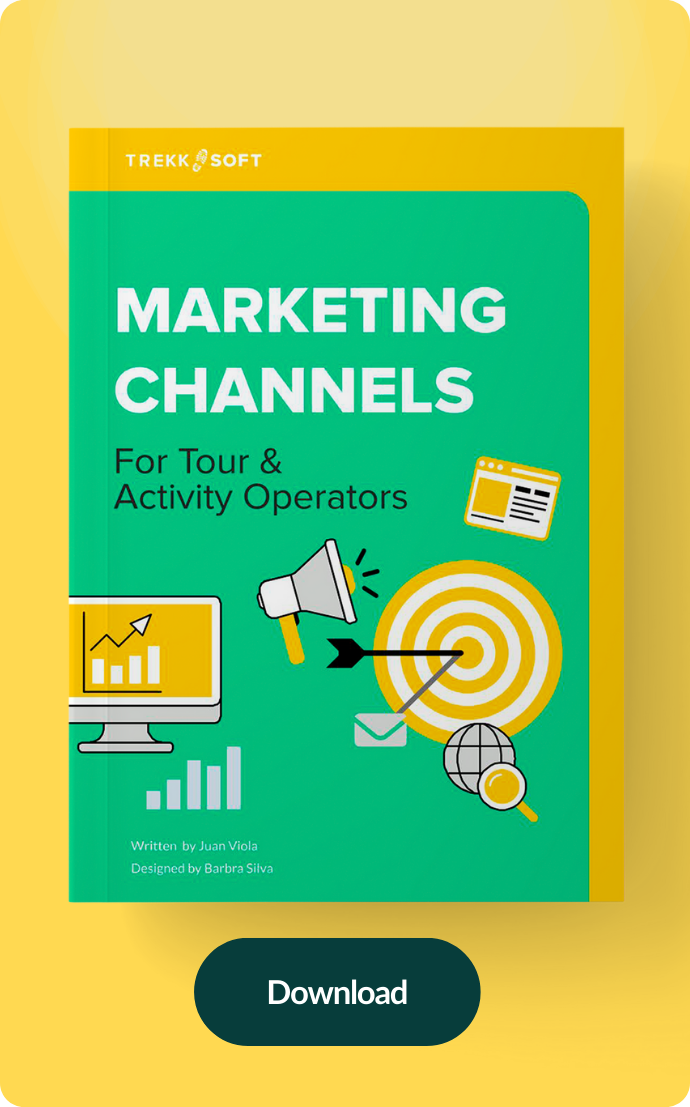If you're in the business of tours and activities, you know that turning a curious website visitor into a delighted customer isn't just about having a fantastic offering. It's about having a seamless and user-friendly booking flow. Let's explore why it matters, the impact it can have on your business, and how TrekkSoft can be your ideal booking platform.
Why booking flow matters?
Imagine this scenario: a potential customer lands on your website, brimming with excitement about embarking on a thrilling adventure or experiencing a captivating tour. However, what happens next—the process of booking—can either be a smooth, delightful journey or a cumbersome, frustrating ordeal.
Your booking flow can either captivate your audience or leave them frustrated and confused. In essence, it's the digital handshake that seals the deal.
The impact of conversion optimization
The art of conversion optimization is about turning visitors into paying customers. It involves refining your online presence to enhance user experience, increase engagement, and, ultimately, boost your conversion rate.
In an era where online competition is fierce, mastering conversion optimization can be a game-changer for your business. It's not just about attracting visitors; it's about converting them into loyal patrons.
Understanding user behavior: the foundation of conversion
Creating a top-notch booking flow starts with knowing your audience like a friend. To craft an experience that resonates with users, you must comprehend their needs, preferences, and behaviors.
Get to know your target audience
Begin your journey by delving into the world of your target audience. Who are they? What are their interests? What drives them to seek your experiences? Research their demographics, interests, and pain points. This knowledge is the foundational step toward creating a booking flow that truly resonates with them.
For that, implementing Google Analytics or other similar web analytics tool is a must. This tools track user behavior and demographics, offering data on the age, location, and interests of your site visitors. Analyzing this data can help refine your understanding of your target audience.
Another idea is to utilize online survey tools like Google Forms or SurveyMonkey to collect data directly from your target audience. Craft well-structured surveys that inquire about their preferences, expectations, and pain points when booking tours or activities. The responses will provide valuable insights into your audience.
Identify user pain points
Every potential customer encounters obstacles on their path to booking. These are often referred to as "pain points." Identifying these pain points is crucial. What frustrates potential customers when they attempt to book with you? Is it a cumbersome registration process? Is it a lack of clarity about availability? Perhaps it's concerns about security or payment options. By identifying and addressing these pain points, you can streamline the booking process and enhance the overall experience, making it smoother and more enjoyable for your visitors.
Consider implementing heatmap tools like Hotjar or Crazy Egg to visually track user interactions on your website. Heatmaps display where users click, move their cursors, or spend the most time. Identifying areas with high drop-offs or frustration can help pinpoint pain points effectively.
Learn from competitors
One of the most valuable sources of insights is your competition. Analyze how other businesses in your niche structure their booking flows. What works well for them, and what doesn't? Examine their user interface, the simplicity of their booking process, and the strategies they employ to build trust. Competitor analysis can provide invaluable insights that you can use to your advantage.
Conduct a thorough analysis of your competitors' websites. Take notes on the elements of their booking process that stand out, both positively and negatively. Look at their user interface, the clarity of their instructions, and any trust-building tactics they employ.
Utilize online competitor benchmarking tools like SimilarWeb or SEMRush. These tools can provide data on your competitors' website traffic, visitor demographics, and popular pages. This information can inform your competitive analysis and strategy.

Crafting your booking flow with TrekkSoft
Now let's roll up our sleeves and create your dream booking flow with TrekkSoft’s help. Here's your roadmap:
Design an intuitive user interface
Imagine your website as your front door. A clear and concise navigation structure is your welcome mat. Visitors should effortlessly find their way around your website, with intuitive menus and logical pathways. With TrekkSoft’s Booking Widget, you may say goodbye to outdated, clunky designs. It’s minimal and thoughtful, focusing on enhancing your customers' experience.
Additionally, with an increasing number of users browsing and booking on mobile devices, mobile responsiveness is no longer a luxury but a necessity. A mobile-friendly design ensures that your potential customers can smoothly navigate and book on your site, whether they're using a desktop, smartphone, or tablet. For instance, 74% of users complete a booking when they book on mobile via TrekkSoft's booking widget.
Streamline the booking process
A streamlined booking process is crucial for ensuring that potential customers can easily and quickly convert into paying customers. Lengthy or complicated booking forms can lead to frustration and abandoned bookings. Therefore, it's vital to simplify the process and make it as user-friendly as possible. Here are some useful recommendations:
Simplify Form Fields: Reduce the number of required form fields to the essential information needed to complete the booking. Minimize optional fields to avoid overwhelming users.
- Offer guest checkout options: Provide the choice of a guest checkout, allowing users to book without creating an account. This reduces friction and caters to those who prefer a quick process.
- Use progress indicators: Implement progress bars or steps indicators during the booking process. This visually guides users through the steps, reducing confusion and enhancing the user experience.
- Provide clear instructions: Offer clear and concise instructions at each stage of the booking process. Users should know what information is required and what to expect next.
- Optimize for mobile: Ensure that your booking process works seamlessly on mobile devices. Mobile optimization is essential, as many users book on smartphones and tablets.
TrekkSoft's booking widget can be set up in 10+ ways, tailoring forms to gather the information you need. Customize your booking flow and deliver a delightful booking experience.
Read more about TrekkSoft’s Booking Flow possibilities
Build trust and credibility
In an online landscape where trust can be scarce, building trust is essential. Users need to feel secure and confident in sharing their personal and payment information with you. Here are some strategies to instill trust and credibility in your booking flow:
- Security and privacy assurances: Provide clear and reassuring information about the security measures in place to protect users' data. Mention encryption, secure payment gateways, and adherence to industry standards for data protection.
- User reviews and testimonials: Showcase authentic user reviews and testimonials prominently. Genuine feedback from satisfied customers can go a long way in building trust.
- Displaying trust badges and certifications: Highlight any certifications, affiliations, or trust badges that your business holds. These symbols act as visual endorsements of your credibility.
TrekkSoft's booking engine offers a payment solution created exclusively for the travel industry, protecting your payments as you grow.
Implement a robust search and filtering system
Make it effortless for users to find exactly what they're looking for. Implement a robust search and filtering system that allows users to refine their options based on their preferences. For example, users should be able to filter by dates, availability, duration, or location.
This level of customization enhances the user experience and helps users quickly zero in on the experiences that align with their desires.
Learn more about TrekkSoft’s booking optimisations
Monitoring analytics and metrics: the compass of optimization
Creating an optimized booking flow is just the beginning; the real magic happens in the ongoing refinement. To continually improve and fine-tune your booking flow, you need to keep a close eye on analytics and metrics. Here's how to navigate this crucial phase:
Tracking conversion rates
Conversion rate tracking is your North Star. It tells you how many visitors actually complete bookings. Analyze the flow of users through your booking process. Where do users drop off, and what are the common exit points? Identifying these drop-off points allows you to focus your optimization efforts where they matter most.
Tracking conversion rates not only reveals the effectiveness of your booking flow but also provides actionable insights into user behavior. Here are some tips for effective conversion rate tracking:
- Utilize Google Analytics or similar tools to measure and analyze conversion rates. Segmenting data allows you to identify trends and areas for improvement.
- Set up conversion tracking, such as tracking pixels or JavaScript tags, to analyse specific marketing campaigns or channels.
Identifying areas for improvement
Analytics reveal areas for improvement. Use the data collected from your analytics tools, such as Google Analytics and Hotjar, to identify areas in your booking flow that may need adjustment. Is a particular form field causing users to abandon their bookings? Is the payment process too lengthy or complex? Are users struggling to find available dates?
Once you've pinpointed the areas for improvement, it's time to put your insights into action. Leverage A/B testing tools like Google Optimize or Optimizely to implement changes systematically. These tools enable you to compare two versions of a page or process and measure their performance. Remember, optimization is an ongoing process, continuous testing and refinements will ensure your booking flow remains user-friendly and conversion-driven.
The journey of ongoing optimization
To recap, your booking flow isn't just a process—it's an experience. It begins with understanding your audience and competitors, followed by creating a streamlined flow.
The goal of an optimized booking flow is not just to increase conversions, but to create an experience that leaves a lasting impression. It's about transforming every website visitor into a delighted customer.
So, as you embark on your journey toward an optimized booking flow, consider taking the next step. Start your journey today by booking a demo with TrekkSoft, and unlock the potential of seamless bookings!


.png)

